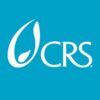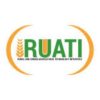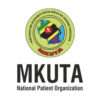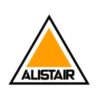TOR for HR-MIS Development at CRS
Job Overview
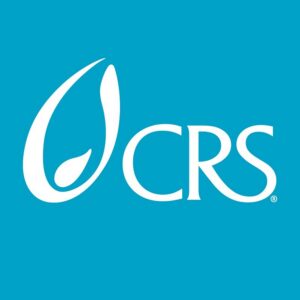
TOR for HR-MIS Development at CRS
TOR for HR-MIS Development at CRS
TERMS OF REFERENCE
DEVELOPMENT OF COUNSENUTH’s HUMAN RESOURCE MANAGEMENT INFORMATION SYSTEM – (HR-MIS)
Background of CRS
Catholic Relief Services USCCB (CRS) is an international NGO registered in Tanzania.
CRS works to save, protect, and transform lives in need in more than 100 countries, without regard to race, religion, or nationality. CRS’s relief and development work are accomplished through programs of emergency response, HIV, health, agriculture, education, microfinance, and peacebuilding.
1.1 Background of COUNSENUTH
The Centre for Counselling, Nutrition and Health Care (COUNSENUTH) is a national non-governmental, non-profit organization in Tanzania established in 1998 with its main office in Dar es Salaam. COUNSENUTH’s Mission is to improve the quality of life of vulnerable groups through innovative, cost-effective, evidence-based actions that enhance positive behaviors and practices with active community participation. For over 25 years of its existence, the Centre has been committed to its Mission and has actively made tangible progress and a difference with gender equality and women empowerment, youth life skills, education performance improvement and employability, as well as climate-responsive health and nutrition programming to improve the wellbeing of the people of Tanzania, especially women, children, adolescents, youth and other most vulnerable groups.
Purpose
CRS would like to engage a reputable company to consult and develop a Human Resource Management Information Systems (HRMIS) on behalf of its partner organization COUNSENUTH. This software shall be designed to help the organization efficiently manage employee data and streamline HR operations. At its core, HRMIS serves as a centralized database for storing and accessing employee information, including details like contact information, compensation, benefits, attendance records, performance reviews, contract management, and more. Implementing a Human Resource Management Information System (HRMIS) will dramatically improve the Centre’s HR operations and unlock strategic insights into organization workforce management.
DOWNLOAD THE FULL TENDER NOTICE HERE
TERMS FOR THE DEVELOPMENT OF COUNSENUTH’S HUMAN RESOURCE MANAGEMENT INFORMATION SYSTEM (HRMIS
HRMIS Requirements and Technical Specifications
2.1.1 Cloud-Based System
The HR-MIS (software) will be hosted by a vendor and will be accessible through web browsers and mobile devices, ensuring flexibility and accessibility for users.
2.1.2 Core HR Module
A key component of HR software, the core HR module stores information about employees and interns. It will serve as a hub for functions that apply to the whole HR system, such as security and reporting. HR personnel will often access this module daily to find or update information.
The consultant should consider the following key features:
- One centralized database rather than multiple databases,
- All the necessary employee/intern’s and volunteer information, such as employee/interns/volunteer name, address, emergency contacts, salary, job, and department, shall be accommodated.
- Role-based security, which simplifies the assigning of access rights to employees.
- Supported for future and back dated entries
2.1.3 Time, Attendance and Absence
The system should be typically featured to capture and track absences (i.e leave), capture hours worked, and overtime hours worked on a time sheet and accommodate the Centre’s policies and practices. The system should have the following features:
- Provide the ability to configure all employee absences.
- Produce time sheets that capture and display the required information, such as project account to be charged, hours spent working, overtime hours, absence and priorities versus achievements
- Configure statutory holidays to specify the number of days per year and define eligibility requirements. Enable automatic forfeiture of unused holiday entitlements at the end of the specified cycle
- Provide approval workflows and reminders for absence requests and completed time sheets.
- Provide a mechanism to capture where employees spend their time, such as training, meetings, conferences, and projects/programs to inform management and HR priorities versus organizational priorities.
- Automate leave requests and approvals
- Track various leave types, such as annual, sick, maternity, paternity, compassionate etc.
- Provide a clear overview of leave balances and history
Read Also: 8 Job Opportunities at Yas Tanzania
2.1 4. Recruiting Module
The recruiting module should cover the lifecycle of finding and hiring new employees. Key features to include the following:
- A job library that contains a job description and key information about the job, such as type of job, salary range, and job level.
- Configurable employee’s requisition form and offer-approval workflow.
- An easy process for posting open positions to multiple websites and social media.
- Automatic filtration of applications based on predefined criteria such as qualifications, years of experience, certifications, or other job-specific requirements.
- Functions for hiring i.e., managers to view and rate candidates and add comments.
- Support for multiple offer templates to meet the organization’s unique needs.
- Support for the entire offer process, including sending offers, candidate signatures and returning signed offers electronically.
- Ease online job search within postings and online applications.
- Support for advanced digital signatureslike those offered through DocuSign.
- Ability to add attachments to offers.
- Ability to integrate with standard office applications such as email and calendar.
- Ease sharing of regular communications to passive candidates.
2.1 5. Onboarding
An onboarding module enhances the onboarding process for new hires and provides a positive first impression. At a minimum, new hires use the onboarding module to complete forms, review policies. The system should consider the following:
- Simple process to move new hires from recruiting to onboarding.
- Customized landing page that allows for adding organizational information, videos, and charts.
- Employees can easily complete and sign forms and policies.
- Before their first day, new hires can access and complete all the necessary paperwork.
- Task lists and schedules for everyone involved in the onboarding process.
- Establish a centralized library to store official onboarding materials and acknowledgment forms.
2.1.6 Offboarding Module
- The module will manage the employees exits.
- Streamline exit interviews and clearance processes
- Automated notifications for Managers and HR personnel
- Tracking of final payments, benefits and document submission
2.1 7 Performance Management
Regardless of the performance management approach, the Centre would wish to consider the following key HR software features:
- Employee and supervisor access to performance reviews.
- Configurable workflows for performance appraisals
- Concurrent filling of forms, which reduces the amount of back-and-forth required to complete the review process.
- Reports and dashboards to track progress and analyze results.
- Accessing of Performance Improvement Plans (PIP) management forms by employee and supervisor
2.1.8 Employee Benefits
- Incorporating a feature that captures Statutory and Organizational-based employee benefits information can save significant time during onboarding and open enrollment.
- Automated tracking and reporting of benefits
Easy integration into the onboarding processes
2.1. 9 Reporting, Dashboards and Analytics
While reviewing HR software features, allocate sufficient time for reporting and dashboards. Too often, those capabilities are left until the end of a demonstration. Please consider the following:
- Enough standard report formats to meet most needs, Including general employees report including all personal information, position, grades, salary, supervisor, location. Report including missing and approved time sheets, leave balance report both accrual and non-accrual, emergency contact reports, performance
- Dashboards that include charts and graphs to provide actionable insights.
- Ability to create custom reports and dashboards without too much difficulty.
- Scheduling reports and dashboards to be emailed to specific employees regularly.
- Restricting access to data using role-based permissions.
2.1.10 Learning and Development
The following features are important:
- Features allowing employees to share the training/seminars and courses attended
- Features indicating organization’s training needs
- Features show organization’s learning session schedules
- Integration with performance management to link learning with career growth
2.1.11 Self-Service/HR Portal
A significant benefit of using HR software is the ability to securely share information with employees and managers. Consider the following self-service features:
- Employee self-service feature that enables employees to view and update personal information.
- Manager self-servicefeature where managers can view and update information about their direct reports.
- Role-based permissions to control access to sensitive data.
- An approval process that ensures all employee- and manager-initiated changes are acceptable.
- Access HR documents and request approvals
2.1.12 Compensation
A good compensation management module will avoid the use of spreadsheets and provide the following benefits:
- Defined eligibility rules for salary adjustment and bonuses. Develop a feature to establish and manage salary grades, ensuring consistent and transparent compensation structures across the organization.
- Workflows based approvals for salary adjustments
- Incorporate advanced data security and access control features into the HR system to safeguard sensitive information. This should include encryption, role-based access permissions, multi-factor authentication, regular audits, and compliance with data protection regulations to ensure the confidentiality and integrity of employee and organizational data.
- Simple reporting to understand who will receive a pay increase and how budgets are being spent.
- Integration with Performance management ratings for compensation decision
- Ability to plan non-base-pay-related compensation items, such as bonuses, and options.
- Filters to view employees based on different criteria’s i.e., Managerial and non-managerial,
- Administrative and programs employees
2.1.13 Calibration/Grading
The consultant to consider the following features when looking at calibration:
- Integration with the performance management for grading.
- Ability to see employees listed on a rating scale, such as a nine-box grid.
- Employees can be moved from one rating to another with drag-and-drop controls.
- The software records the original and new rating.
- Filters to narrow the number of employees displayed, such as by HR department, job title or job level.
2.1.14 Rewards and recognition
Providing employees with tools to recognize each other’s contributions helps build a culture of appreciation and boosts employee engagement.
The data can also be helpful when employees and managers meet to discuss performance.
When the recognition includes points that can be redeemed for rewards, employees benefit further from the chance to spend points on things they value.
Some features to consider include the following:
- Software that handles both recognition and rewards.
- Software can customize the points awarded when someone is recognized by a peer versus someone in a leadership position.
- A customizable catalog of rewards and performance indicators
- Catalog for performance (SMART) indicators integrating them with gamifications like worktime/performance leaderboard
- Indicate employees’ challenges tied to learning and meet performance goals
Data Security and Protection Measures
The HRMIS should be developed with robust security features to ensure that all data stored within the system is safeguarded against unauthorized access, breaches, and other potential threats. It should include features to
- Protect sensitive information (e.g., personal data) through encryption during transmission and storage.
- Implement role-based access to restrict data visibility and functions to authorized personnel only.
- Enhance login security by requiring a password and secondary authentication.
- Enable activity logging to track user actions and identify potential security breaches.
Schedule secure backups to safeguard against data loss due to system failure or cyberattacks. - Align the system with relevant data protection laws (The Tanzania PDP Act 2022) to minimize legal risks.
- Use encrypted and authenticated APIs to protect data during third-party interactions.
Document’s management module
The document management module will.
- Safely store and categorize legal, compliance and HR related documents
- Ensure easy access and retrieval for HR audits and compliance check
- Provide version control and secure sharing capabilities
Payroll and Benefits Administration
HR-MIS should automate payroll calculations, tax deductions, and benefits administration. It ensures accurate and timely payment processing, maintains compliance with labor laws, and generates comprehensive payroll reports.
Implementing HRMIS
Successful implementation of COUNSENUTH HR- MIS.
- Vendor Evaluation: Research and evaluate HRMIS vendors based on their reputation, expertise, system capabilities, scalability, and customer support.
- Data Migration and Security: The vendor should provide guidance and plan the migration of existing employee data into the HRMIS system securely. Ensure that the chosen solution complies with data protection regulations and offers robust security measures, including encryption, access controls, and regular data backups.
- Training and Change Management: Prepare a comprehensive training program to familiarize HR staff and employees with the new system. Provide user manuals, and hands-on workshops to ensure smooth adoption. Implement change management strategies to address any resistance or concerns during the transition.
- Pilot Testing and Feedback: Conduct a pilot test with a select group of users to validate the system’s functionality and identify any potential issues or areas for improvement. Encourage feedback from users to refine the system and address any usability concerns.
- Rollout and Continuous Support: Deploy the HRMIS system across the organization in a phased manner, ensuring sufficient technical support and guidance throughout the process. Regularly monitor and evaluate system performance, seeking feedback from users and addressing any issues promptly.
Period
Estimated timeframe: Uncertain
Communication protocol
Update CRS Management on the progress of the assignment and whenever there is new information.
Point persons
Sr HR, Sr Operations Manager, and Technical Advisor – PNS
Disclosure of Information
It is understood and agreed that the consultant shall, during and after the effective period of the Contract, treat as confidential and not divulge, any information obtained during the performance of the Contract unless authorized in writing by the Country Manager of CRS.
Qualifications
- Extensive experience in conducting similar assignments with organizations.
- Proven proficient in software development and database management.
- Experience with HR software/ERP systems
- Well-organized
- Excellent with prioritization and time-management
- Demonstrated experience in training end-users and providing technical support.
- Submission of the company/individual profile indicating necessary information of the company/individual.
Expression of Interest
Interested companies are requested to submit their applications, comprising a concise technical and financial proposal, along with the following:
Technical Proposal:
- Provide details on team capability and the technical approach to address the objectives of the assignment.
Financial Proposal:
- Include all proposed costs in the local currency (i.e., consultation fees, operational costs, and taxes), presented in a well-stipulated manner.
Additional Requirements
- Demonstration of experience on the related assignment, training package, etc
- Registration certificate/license.
- Tax Identification Number (TIN) or VAT number.
- Confirmation of Electronic Fiscal Device (EFD) receipt.
How to apply:
The proposal is to be sent to the e-mail below.
Country Manager
Catholic Relief Services – Tanzania Program
E-mail; [email protected]
Note: Please indicate the ‘’Development of COUNSENUTH’s HR-MIS’’
Bid written in English addressed to the attention of the CRS / Tanzania Program Country Manager must be submitted to the above e-mail address on or before 03rd March 2025 at 5:00 PM.


